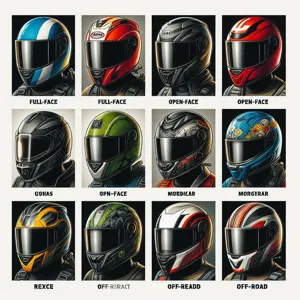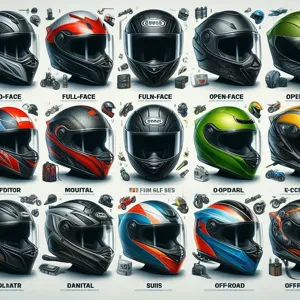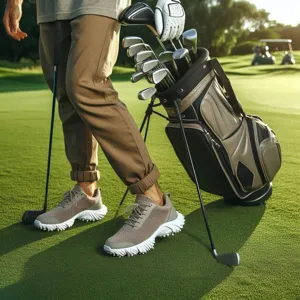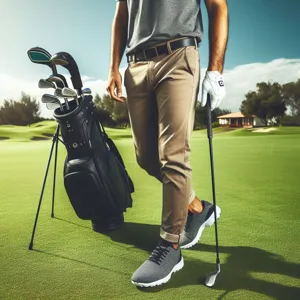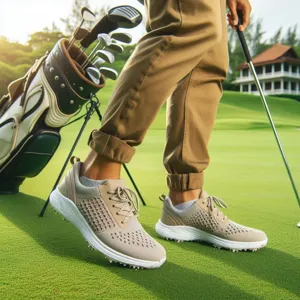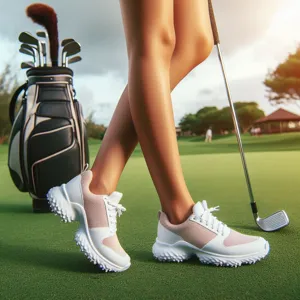When it comes to motorbiking, the thrill of the open road is irresistible, but ensuring your safety and comfort should always come first.
One of the most crucial pieces of gear in a rider’s arsenal is a reliable pair of motorbike boots. Beyond mere aesthetics, the right boots can make all the difference in terms of protection against the elements and potential accidents. With countless styles and features available, choosing the perfect pair might seem daunting. Fear not! In this ultimate guide, we’ll dive deep into the essential factors to consider when selecting motorbike boots, from materials and safety certifications to comfort and fit. Whether you’re a seasoned rider or a beginner gearing up for your first adventure, we’ve got you covered with insights that will help you ride confidently while keeping your feet safe and comfortable on every journey. Get ready to rev up your motorbike gear and hit the road with peace of mind!
1. Introduction to Motorbike Boots: Why Safety and Comfort Matter

When it comes to hitting the open road on two wheels, the importance of the right gear cannot be overstated. Among the essential pieces of equipment, motorbike boots stand out as a crucial element not just for style, but for safety and comfort. Whether you’re a seasoned rider or a beginner, understanding the role that quality motorbike boots play in your riding experience is paramount.
Safety is the first and foremost consideration. In the event of an accident, your feet and ankles are particularly vulnerable, and the right boots can provide the protection you need. Look for features such as reinforced toe caps, ankle support, and durable materials that can withstand abrasion. Brands that prioritize safety often implement technologies designed to absorb shock and protect against impacts, which can be a lifesaver during a fall.
However, safety shouldn’t come at the expense of comfort. A long ride can quickly turn into a painful experience if your footwear doesn’t fit properly or lacks adequate support. The ideal motorbike boots should offer a snug fit without being restrictive, allowing for flexibility and movement. Breathable materials are also essential, as they help regulate temperature and moisture, keeping your feet comfortable throughout your journey.
Investing in high-quality motorbike boots means more than just making a purchase; it’s about ensuring that you have the right blend of safety and comfort for every ride. In this guide, we’ll explore the various types of motorbike boots available, what to look for when choosing the perfect pair, and tips for maintaining them to ensure they last for many adventures to come. Get ready to gear up and hit the road with confidence!
2. Types of Motorbike Boots: Touring, Racing, Off-Road, and More
When it comes to selecting the perfect motorbike boots, understanding the different types available is crucial for both safety and comfort. Each category is designed with specific riding styles and conditions in mind, ensuring that you have the right protection and functionality for your adventures on two wheels.
**Touring Boots:** Ideal for long-distance rides, touring boots are crafted to provide comfort during extended periods on the bike. They often feature waterproof materials and thermal insulation, making them suitable for various weather conditions. Touring boots typically have a relaxed fit, allowing for easy wear during stops. Look for features like reinforced toe boxes, ankle protection, and good grip soles to enhance your riding experience.
**Racing Boots:** If speed is your passion, racing boots are built to give you the edge on the track. These boots are engineered with a snug fit, providing maximum support and minimal movement. They often incorporate high-tech materials for lightweight durability, along with advanced protective features like sliders and reinforced areas. Racing boots prioritize performance and aerodynamics, making them essential for competitive riders.
**Off-Road Boots:** Designed specifically for the rugged demands of off-road biking, these boots excel in protection and durability. Off-road boots typically extend higher up the leg, offering enhanced protection against debris and impacts. They feature robust soles for grip on varied terrain, along with adjustable buckles for a secure fit. Look for models with waterproof linings and breathable materials to keep your feet comfortable during challenging rides.
**Street Boots:** For everyday riders navigating urban environments, street boots blend style with practicality. These boots often resemble casual footwear but are constructed with protective elements such as reinforced toes and ankle guards. Street boots provide versatility, allowing you to transition seamlessly from bike to casual outings without compromising on safety.
**Adventure Boots:** Combining features from touring and off-road boots, adventure boots are perfect for riders who tackle both paved roads and rugged trails. They offer versatility, comfort, and protection, making them an excellent choice for long journeys that might include varied terrains. Look for models that are lightweight, waterproof, and equipped with adequate ankle support.
Understanding these different types of motorbike boots will help you make an informed decision based on your riding style and needs. Whether you’re a touring enthusiast, a racing aficionado, an off-road adventurer, or an urban commuter, there’s a perfect pair of boots waiting to elevate your riding experience while keeping safety and comfort at the forefront.
3. Key Features to Look for in Safe Motorbike Boots

When it comes to selecting the perfect motorbike boots, safety should be your top priority, but comfort should never take a backseat. To navigate the myriad options available, it’s essential to know the key features that distinguish high-quality motorbike boots from the rest. Here are the vital aspects to consider:
**1. Toe Protection:** A reinforced toe cap is crucial, as it shields your feet from impact and crushing injuries in the event of an accident. Look for boots with steel or composite toe protection, which can significantly enhance safety without sacrificing comfort.
**2. Ankle Stability:** The ankle is one of the most vulnerable areas during a fall. Opt for boots that provide adequate support, featuring higher shafts that wrap around the ankle. Some models come with additional padding or a built-in ankle brace, offering an extra layer of protection and reducing the risk of sprains.
**3. Slip Resistance:** The sole of your boots should be designed for optimal grip, especially when you need to put your foot down in wet or slippery conditions. Look for boots with a rubber sole that has deep treads, which will help prevent slips and provide stability on various surfaces.
**4. Waterproof & Breathable Materials:** Weather can be unpredictable, so having boots that keep your feet dry is essential. Seek out materials like Gore-Tex or other waterproof membranes that allow breathability, ensuring your feet remain comfortable during long rides.
**5. Closure System:** A secure fit is vital for both safety and comfort. Consider boots with adjustable closure systems, such as buckles, laces, or Velcro straps, which allow for a customizable fit. This not only enhances support but also prevents the boots from slipping during rides.
**6. Lightweight Design:** While protection is paramount, heavy boots can lead to fatigue during long rides. Look for lightweight options that don’t compromise on safety features. Modern materials and designs can provide robust protection without the added bulk.
**7. CE Certification:** Lastly, always check for CE (Conformité Européenne) certification, which indicates that the boots meet the essential safety requirements set by the European Union. This certification is a reliable benchmark for quality and safety.
By keeping these key features in mind, you can make an informed choice that ensures your feet are both safe and comfortable, allowing you to enjoy the ride with confidence. Remember, the right pair of motorbike boots is not just an accessory; it’s an investment in your safety and riding experience.
4. Understanding the Importance of Fit and Comfort
When it comes to selecting the perfect motorbike boots, understanding the importance of fit and comfort cannot be overstated. Riding a motorcycle often involves long hours on the road, and the last thing you want is to be distracted by discomfort or pain from ill-fitting footwear. A properly fitting boot not only enhances your riding experience but also ensures your safety in the event of an accident.
First and foremost, it’s essential to recognize that motorbike boots are not one-size-fits-all. Each brand and model can vary significantly in their sizing and fit, so it’s crucial to try on different options to find what works best for you. Pay attention to how the boots feel around your toes, heels, and arches. A good pair should fit snugly but not so tightly that it restricts blood flow or causes discomfort. Remember, your feet will swell slightly during rides, so consider this when assessing fit.
Comfort goes hand-in-hand with fit. Look for features such as cushioned insoles, breathable materials, and flexible construction that allow for natural movement. If you plan to ride for extended periods, investing in boots with moisture-wicking linings and adequate ankle support is wise. These elements not only enhance comfort but also contribute to overall stability, reducing fatigue as you navigate through various terrains.
Also, consider the type of riding you’ll be doing. If you’re a weekend cruiser, you might prioritize style and comfort, while daily commuters may need boots that offer more protection and durability. Regardless of your riding style, remember that the right fit and comfort level can transform your riding experience from mundane to exhilarating, allowing you to focus on the thrill of the ride rather than the ache in your feet. Ultimately, taking the time to find motorbike boots that fit well and feel great will keep you both safe and comfortable on every journey.
5. Materials Used in Motorbike Boots: Leather vs. Synthetic

When it comes to choosing the right motorbike boots, one of the most critical decisions you’ll make involves the materials they are constructed from. The two primary options on the market are leather and synthetic materials, each offering distinct advantages and drawbacks that can significantly impact your riding experience.
**Leather Boots**
Leather has long been the traditional choice for motorbike enthusiasts, and for good reason. Renowned for its durability and natural resistance to abrasions, high-quality leather provides an exceptional level of protection against the elements and potential road hazards. The inherent breathability of leather allows for better airflow, helping to keep your feet cool during long rides. Additionally, leather boots often mold to the shape of your feet over time, providing a customized fit that enhances comfort.
However, it’s essential to consider that not all leather is created equal. Full-grain leather offers the best resilience and weather resistance, while cheaper options may compromise on quality. Maintenance is another factor—leather requires regular conditioning and care to maintain its protective qualities and appearance.
**Synthetic Boots**
On the other hand, synthetic materials have made significant strides in recent years, offering a lightweight alternative that can rival leather in both protection and comfort. Made from materials like nylon, polyester, or advanced composites, synthetic boots are often waterproof, which can be a game-changer for riders who face wet conditions. Moreover, many synthetic options come equipped with modern technologies that enhance breathability and moisture-wicking properties, ensuring your feet stay comfortable even during the hottest rides.
One of the notable benefits of synthetic boots is their lower price point. They often require less maintenance than leather, making them a convenient choice for those who may not have the time or inclination to care for leather. However, it’s worth noting that while they can provide excellent protection, synthetic materials may not always offer the same level of abrasion resistance as high-quality leather.
**The Verdict**
Ultimately, the choice between leather and synthetic motorbike boots will depend on your personal preferences, riding style, and the conditions you typically encounter on the road. If you prioritize durability and timeless style, leather might be your go-to. Conversely, if lightweight comfort and weather resistance are at the top of your list, synthetic could be the way to go. Whichever material you choose, ensuring that the boots fit well and provide adequate protection should be your top priority, as safety and comfort are key ingredients to an enjoyable ride.
6. Ankle Protection: What You Need to Know
When it comes to motorbike boots, ankle protection should be at the forefront of your considerations. The ankle is one of the most vulnerable parts of the body during a fall or accident, and investing in boots that offer adequate protection is essential for your safety on the road.
Look for boots that feature reinforced ankle areas, which can provide stability and guard against twisting injuries. Many high-quality motorbike boots come equipped with internal ankle cups or external protective shells designed to absorb impact and prevent injury during an unexpected tumble. These protective features can vary widely between brands and models, so it’s crucial to pay attention to the design and materials used.
Additionally, consider the height of the boot. Higher-cut models often extend above the ankle, offering an extra layer of protection. While these may be a bit bulkier, they can significantly reduce the risk of injury, especially in more aggressive riding styles or challenging terrains.
Comfort is just as important as protection, so look for boots that provide a snug yet flexible fit around the ankle, allowing for a full range of motion while still safeguarding this critical area. Pay attention to features like padded linings and adjustable closures, which can enhance both comfort and security.
Ultimately, choosing the right pair of motorbike boots with strong ankle protection is a balance of safety, comfort, and style. Prioritizing this aspect not only helps you feel more secure while riding but also enhances your overall riding experience, allowing you to focus on the thrill of the ride rather than worrying about your safety.
7. Waterproof vs. Breathable Boots: Making the Right Choice

When it comes to selecting the perfect pair of motorbike boots, the age-old debate of waterproof versus breathable options often takes center stage. Understanding the nuances of each type can greatly influence your riding experience and comfort, especially on long journeys or varying terrains.
Waterproof boots are designed to keep your feet dry in wet conditions, ensuring that rain or puddles won’t soak through and leave you squelching in discomfort. These boots typically feature specialized membranes, such as Gore-Tex, which act as a barrier against water while still allowing moisture to escape. If you frequently ride in areas with unpredictable weather or during the rainy season, waterproof boots can be a lifesaver. They provide an essential layer of protection, letting you focus on the road ahead rather than the elements.
On the flip side, breathable boots prioritize ventilation, making them an excellent choice for warmer climates or long rides in the summer sun. Crafted with materials that allow for airflow, breathable boots help wick moisture away from your feet, reducing the risk of sweat accumulation and keeping your feet cool and comfortable. If you find yourself riding predominantly in hot weather or during extended trips, investing in a pair of breathable boots can enhance your overall comfort and reduce fatigue.
Ultimately, the decision between waterproof and breathable boots should be informed by your riding habits and the environments you frequent. Many riders opt for a versatile approach, choosing boots that balance both features, ensuring they are ready for whatever weather conditions come their way. Remember, the right pair of motorbike boots should not only protect your feet but also enhance your riding experience, allowing you to hit the road with confidence, no matter the forecast.
8. The Role of Sole Design in Stability and Grip
When it comes to motorbike boots, the sole design plays a critical role in ensuring both stability and grip—two fundamental elements that can significantly affect your riding experience and safety on the road. A well-designed sole not only enhances your control over the bike but also provides the necessary support to keep you firmly planted, whether you’re navigating through city traffic or tackling rugged terrains.
One of the key features to look for in a boot’s sole is the material. Rubber is a popular choice due to its natural grip and durability, allowing for excellent traction on both wet and dry surfaces. Look for soles with a specific tread pattern, as this can further improve grip by channeling away water and providing a larger surface area for contact with the ground.
Additionally, consider the thickness of the sole. A thicker sole can offer greater shock absorption, which is especially beneficial during long rides or when encountering uneven surfaces. However, it’s essential to strike a balance; a sole that is too thick may sacrifice flexibility and feel, making it harder to operate the bike controls effectively.
Moreover, some boots feature reinforced areas, such as a raised toe or a contoured heel, which not only enhance stability but also protect your feet in the event of a fall. These design elements contribute to a secure fit, allowing you to maintain a solid footing when stopped or maneuvering your bike at low speeds.
In summary, the sole design of motorbike boots is a vital aspect that influences your stability and grip. By choosing boots with a well-constructed sole that combines the right materials, tread patterns, and thickness, you can ensure a safer and more comfortable ride, allowing you to focus on the thrill of the journey ahead.
9. How to Properly Size Motorbike Boots
Choosing the right size for your motorbike boots is crucial for both safety and comfort on the road. An ill-fitting boot can lead to discomfort during long rides, impede your control over the bike, and even compromise your safety in case of an accident. Here are some essential tips to ensure you find the perfect fit:
**1. Measure Your Feet Accurately:** Start by measuring your feet at the end of the day when they are at their largest. Stand on a piece of paper, trace around your foot, and measure the longest and widest parts. Don’t forget to measure both feet, as they may differ slightly in size.
**2. Understand Boot Sizing:** Motorbike boots come in various sizing systems—US, UK, and EU. Familiarize yourself with the sizing chart specific to the brand you’re interested in, as sizes can vary between manufacturers. Always check the brand’s conversion table to find your equivalent size.
**3. Try Before You Buy:** If possible, visit a store to try on different styles and brands. Walk around in the boots to assess their comfort and fit. A properly sized boot should feel snug but not restrictive. You should be able to wiggle your toes without feeling cramped.
**4. Consider the Sock Factor:** When trying on boots, wear the type of socks you plan to use while riding. Thick or padded socks can alter the fit, so it’s essential to get a true sense of how the boots will feel in real riding conditions.
**5. Pay Attention to Closure Systems:** Many motorbike boots feature different closure systems such as buckles, zippers, or Velcro. Ensure that the closure system is easy to use and allows you to achieve a secure fit. The boots should feel stable without any slippage, especially around the ankles.
**6. Break Them In:** New motorbike boots may feel stiff at first. It’s important to give them some time to break in. Wear them around the house or on short rides to allow the material to conform to your feet, enhancing comfort and fit over time.
**7. Check for Return Policies:** If you’re buying online, make sure to check the return policy. This allows you to exchange or return the boots if they don’t fit as expected. Many brands offer a satisfaction guarantee, so take advantage of this to ensure you find the right fit.
By following these steps, you’ll be well on your way to finding motorbike boots that not only offer the protection you need but also provide the comfort required for those long journeys ahead. Remember, the right fit is essential for an enjoyable and safe riding experience!
10. Maintenance Tips for Extending the Life of Your Boots
Motorbike boots are a crucial investment for any rider, combining safety and comfort on the open road. However, like any piece of gear, their longevity relies heavily on proper care and maintenance. To ensure your boots remain in top condition for years to come, follow these essential maintenance tips.
**1. Regular Cleaning:** After every ride, take a few minutes to wipe down your boots with a damp cloth to remove dirt, mud, and grime. For tougher stains, use a mild soap or specialized leather cleaner. Avoid harsh chemicals that can damage the material. For waterproof boots, ensure that you rinse off any salt or residue that can degrade the waterproofing over time.
**2. Drying Properly:** If your boots get wet, don’t just throw them in the dryer or leave them in direct sunlight. Instead, dry them at room temperature, using crumpled newspaper or boot trees inserted inside to help absorb moisture and maintain shape. This prevents the leather from cracking and helps retain the fit.
**3. Conditioning:** Leather boots need moisture to remain supple. Apply a good quality leather conditioner every few months to keep the material hydrated and prevent it from drying out. This not only helps maintain the aesthetics but also extends the life of the leather.
**4. Sole Inspection:** Regularly check the soles of your boots for wear and tear. If you notice significant wear or reduction in grip, it may be time to resole or replace the boots altogether. A sturdy, well-maintained sole is crucial for safety, providing the traction needed on slippery surfaces.
**5. Store Wisely:** When not in use, store your boots in a cool, dry place away from direct sunlight. Avoid cramming them into tight spaces, as this can deform their shape. Consider using boot bags or boxes to protect them from dust and pests.
**6. repair Promptly:** Don’t ignore minor damages such as loose stitching or scuffed areas. Address repairs immediately to prevent further deterioration. Many local cobblers specialize in motorbike gear and can provide repairs that extend the usable life of your boots.
By following these maintenance tips, you can enjoy the comfort and protection your motorbike boots provide for many miles to come. A little care goes a long way in ensuring that your boots remain not only safe but also stylish, ride after ride.
11. Price vs. Quality: Finding the Best Value
When it comes to motorbike boots, the age-old adage “you get what you pay for” rings particularly true. As you embark on the quest for the perfect pair, it’s crucial to strike a balance between price and quality to ensure you’re making a smart investment. While it can be tempting to opt for cheaper options, especially if you’re just starting out or riding occasionally, compromising on quality can lead to significant discomfort or, worse, safety hazards in the event of an accident.
High-quality motorbike boots typically come with superior materials, enhanced protection features, and thoughtful designs that prioritize comfort for long rides. Look for boots made from durable leathers or advanced synthetic materials that offer both waterproofing and breathability. These features may cost more upfront but can save you money in the long run by prolonging the life of your boots and keeping your feet comfortable in varying weather conditions.
On the other hand, there are budget-friendly options that still offer decent protection and comfort. The key is to do your research—read reviews, compare brands, and pay attention to the details. A well-constructed boot that fits snugly and offers good ankle support can often be found at a reasonable price if you know where to look.
Additionally, consider the long-term value of your purchase. Investing in a good pair of motorbike boots can enhance your riding experience, allowing you to focus on the road rather than the discomfort on your feet. Look for sales, discounts, or even second-hand options from reputable sellers. By carefully weighing your choices, you can find a pair of motorbike boots that deliver exceptional quality without breaking the bank, ensuring that your rides are safe, comfortable, and stylish.
12. Top Brands and Models to Consider
When it comes to selecting the perfect motorbike boots, the brand and model can significantly influence both safety and comfort. With countless options available, it’s essential to narrow down your choices to those that are tried and tested by riders around the world. Here are some top brands and models that consistently receive high praise for their quality, durability, and protection.
**1. Alpinestars:** Renowned for their blend of performance and innovation, Alpinestars offers a diverse range of boots suitable for various riding styles. The Alpinestars Tech 7 is particularly popular among off-road enthusiasts, featuring a lightweight design with advanced protection and a flexible fit. For street riders, the Alpinestars J-6 offers a stylish yet protective option, integrating a classic look with modern safety features.
**2. Sidi:** An Italian brand that has carved its name in the motorbike gear industry, Sidi is celebrated for its craftsmanship and attention to detail. The Sidi Adventure 2 Gore-Tex boots stand out for their versatility, providing excellent waterproofing and comfort for long-distance touring. For those who prefer a racing-style boot, the Sidi Mag-1 is engineered for high performance, featuring a secure fit and robust protection.
**3. TCX:** With a focus on technology and comfort, TCX boots cater to both casual riders and hardcore enthusiasts. The TCX Infinity Gore-Tex boots are a favorite for touring, offering impressive waterproof capabilities and a comfortable fit for long rides. Meanwhile, the TCX X-Rap boots deliver a sporty feel, perfect for those who enjoy a more aggressive riding style.
**4. Forma:** Known for their exceptional comfort and affordability, Forma boots are a fantastic choice for riders who value both protection and ease of wear. The Forma Adventure boots are particularly noted for their rugged construction and excellent grip, making them ideal for both on-road and off-road adventures. The Forma Bouncy boots provide a more casual look while maintaining solid protection and comfort.
**5. Dainese:** Combining Italian style with cutting-edge safety features, Dainese offers boots that don’t compromise on aesthetics or functionality. The Dainese Torque 3 Out boots are designed for sport riders, featuring a sleek profile and advanced protection technology. For a more casual option, the Dainese Street Biker D-WP boots seamlessly blend style with practical waterproofing.
When choosing your motorbike boots, it’s crucial to consider the specific features that align with your riding style and preferences. Whether you prioritize waterproofing for long-distance journeys or looking for lightweight options for off-road adventures, these top brands and models provide an excellent starting point. Remember, investing in high-quality boots will not only enhance your riding experience but also ensure that your feet are well-protected on every journey.
13. Real Rider Reviews: What to Look for in Feedback
When it comes to choosing the perfect motorbike boots, there’s no better resource than the insights of fellow riders. Real rider reviews can offer a treasure trove of information, shedding light on aspects that specifications and marketing materials often overlook. But not all feedback is created equal, so it’s crucial to know what to look for when sifting through reviews.
First and foremost, pay close attention to the **comfort level** described by riders. Look for comments that mention the initial fit and how the boots feel after long rides. Are they too stiff? Do they require a break-in period? Riders often share their experiences regarding the comfort of the sole, the padding, and whether the boots maintain comfort during extended periods on the bike.
Next, consider **durability** feedback. Motorbike boots endure a lot—from the elements to the rigors of the road. Reviews that mention how the boots hold up against wear and tear, scuffs, and even the occasional spill can provide invaluable insights. Look for comments about the materials used and whether riders find them resilient over time.
**Safety features** are another critical aspect to scrutinize in reviews. Riders often share their experiences in high-stress situations, detailing how the boots performed during unexpected events. Look for mentions of reinforced toe caps, ankle protection, and water resistance. Real-world accounts can reveal if a boot truly lives up to its safety claims.
Lastly, consider the **style and versatility** of the boots. Many riders appreciate options that can transition from bike to casual wear seamlessly. Reviews that discuss the boots’ aesthetic and how well they pair with different riding gear can help you find a style that suits your personal taste, while still ensuring that safety isn’t compromised.
By focusing on comfort, durability, safety, and style in rider reviews, you’ll gain a deeper understanding of which motorbike boots are worth your investment. Remember, the voices of those who have ridden the miles can guide you to make a choice that keeps you secure and stylish on the road.
14. Conclusion: Making an Informed Decision
Choosing the right motorbike boots is not just about style; it’s about safety, comfort, and making an informed decision that will enhance your riding experience. As we’ve explored in this guide, the right pair of boots can significantly impact your overall performance on the road and protect you in the event of an accident.
Reflect on the key factors we’ve discussed: the material of the boots, the level of protection they offer, their comfort and fit, and the specific riding conditions you’ll encounter. Whether you’re cruising through city streets, tackling rugged terrain, or embarking on long-distance journeys, understanding your unique needs is essential.
Take the time to try on different styles and brands, paying close attention to how they feel when you walk and ride. Remember that a good pair of motorbike boots should provide you with ample support, flexibility, and grip, while also being breathable enough to keep your feet comfortable during long rides.
Investing in quality motorbike boots is an investment in your safety and enjoyment. With the right knowledge and a careful selection process, you can confidently choose boots that not only fit well and look great but also provide the protection you need. So gear up, hit the road, and ride with peace of mind, knowing you’ve made an informed choice for your adventures ahead.
15. Additional Resources for Motorbike Gear Enthusiasts
As you embark on your journey to find the perfect motorbike boots, it’s essential to equip yourself with a wealth of knowledge that extends beyond just footwear. The world of motorbike gear is vast, and there are numerous resources available to help enthusiasts like you navigate the intricacies of safety, comfort, and style.
**Online Communities and Forums:** One of the most valuable resources at your disposal is the online community of motorbike enthusiasts. Websites like Reddit, Adventure Rider, and specific Facebook groups provide platforms where riders share their experiences, recommendations, and reviews. Engaging in these communities can offer firsthand insight into the real-world performance of various boot brands and models.
**YouTube Reviews and Tutorials:** Visual learners will find YouTube an invaluable tool. Many seasoned riders create detailed reviews and tutorials that showcase not only the features of motorbike boots but also their durability and comfort in action. Watching these videos can help you better understand how different boots perform in various riding conditions, giving you a comprehensive view before making a purchase.
**Motorbike Gear Blogs and Websites:** The internet is filled with specialized blogs and websites dedicated to motorbike gear. Sites like RevZilla, Cycle Gear, and Motorcycle.com often feature in-depth articles, buying guides, and gear comparisons. These resources can help you stay updated on the latest trends and innovations in motorbike gear, ensuring you make an informed decision.
**Safety Standards and Guidelines:** Understanding safety standards is crucial when selecting your motorbike boots. Familiarize yourself with organizations such as the European Committee for Standardization (CEN) and the American National Standards Institute (ANSI), which provide guidelines on protective gear. Knowing these standards can help you identify which boots offer the best protection for your riding style.
**Local Riding Clubs and Events:** Finally, don’t underestimate the value of local riding clubs and events. Joining a community of motorbike enthusiasts not only fosters camaraderie but also provides opportunities to try on gear, attend workshops, and gain advice from experienced riders. Many clubs organize group rides where you can see how different gear holds up in real-life situations, further informing your choices.
By tapping into these resources, you’ll be well-equipped to make informed decisions about your motorbike boots and gear. Remember, the right information can enhance your riding experience and keep you safe on the road. Happy riding!
As we wrap up our ultimate guide to choosing safe and comfortable motorbike boots, we hope you feel empowered to make an informed decision that enhances your riding experience. The right pair of boots not only protects your feet but also elevates your comfort and confidence on the road. By considering factors such as material, fit, safety features, and style, you can find the perfect balance between protection and performance. Remember, investing in quality motorbike boots is an investment in your safety and enjoyment, so take your time and choose wisely. We can’t wait to see you gear up and hit the road with your new boots—ride safe and happy adventures await!


